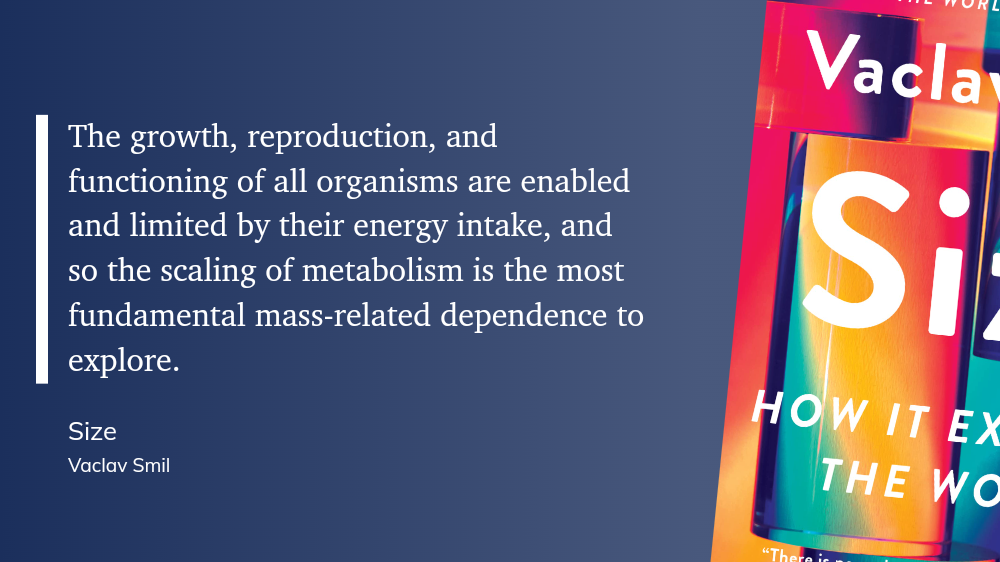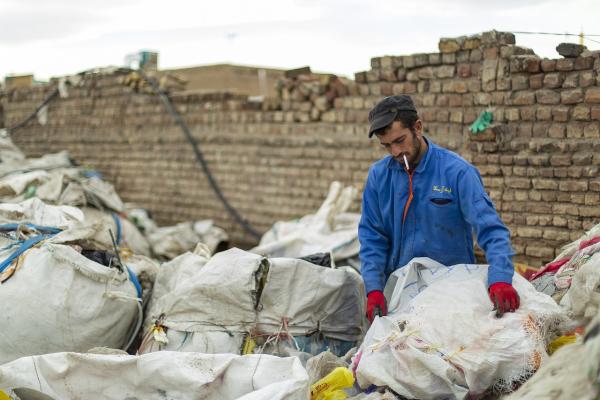“The key question is whether waste is produced more or less efficiently as systems scale up, and how big a recycling burden there is as a consequence.”
- Santa Fe Institute Professor Chris Kempes.
Our species is rapidly growing and urbanizing. While much discussion focuses on producing greater resources to “feed and house” a growing population, less interest is concentrated on our waste. But waste management is central to our health directly and through its impact on our environment. An ability to model urban waste production would benefit how we plan and grow our cities.
Scaling in the context of human-ecology interactions emphasizes the feedback loops between human behavior and ecological outcomes. It's crucial to recognize the interconnected nature of resource limitations and waste challenges [1]. Unsustainable resource extraction contributes to both resource depletion and environmental degradation. Three types of waste, wastewater, solid waste, and greenhouse gases, are especially entangled.
Wastewater contributes to the depletion of freshwater resources and, if contaminated, can pose serious health risks, and its scarcity impacts our food supply. Solid waste can contribute to soil, water, and air pollution, pose a risk to our health, reduce the availability of land, and inadequate extraction of materials, which adds to resource depletion. The role of greenhouse gases in our changing climate is well recognized.
The researchers identified three primary forms of waste: wastewater, municipal solid waste (MSW), and greenhouse gas emissions (GHG). They looked at the waste of a range of global cities, looking for universal scaling laws. They found:
- Linear scaling in the production of municipal solid waste – as the size of the city grows, MSW grows at the same rate. A doubling of the city size results in the doubling of MSW. They ascribe this to individual behavior independent of changes in density.
- Sublinear scaling in GHG emissions – as the city grows, the growth of GHG is less, reflecting an economy of scale, e.g., the presence of public transportation or centralized marketing reducing the need for automobiles and trucks to service the same size communities.
- Superlinear scaling where waste creation exceeds population growth – as the city grows, the production of wastewater increases at a greater rate. The researchers ascribe this to “increased rates of interpersonal interactions as cities densify with increasing population size.”
“…bigger cities contribute disproportionately more liquid waste than smaller cities, but expel fewer greenhouse gasses.”
While many cities followed these “laws” of scaling, others did not. Like other living species, evolving cities will adapt to their local environment. This adaptation was seen with deviations in cities' adherence to scaling for wastewater. There was more wastewater in those cities with higher rainfall; in those with less rainfall, “water was used more efficiently.”
“Cities tend to deviate from the universal scaling law as they grow wealthier. Cities with higher per-capita GDP generate more waste across the board.”
Similar adaptations were apparent for both MSW and GHG but were more related to economic circumstances as measured by GDP than qualities of the natural environment. Those with more money were more wasteful of solids and generated more GHG emissions.
Using temporal data, the researchers found that both wastewater’s superlinear scaling and GHG’s sublinear scaling were relatively stable and “conserved” over time. MSW’s scaling was initially sublinear, but as cities in China demonstrated, as the population expanded, MSW tended to follow the rate of population increases more closely. Any economies of scale to MSW are lost as cities grow; on the more positive side, they seem to stabilize at values that can be guesstimated from population and GDP
 The world continues to urbanize, especially in India and sub-Saharan Africa. Urban populations are anticipated to grow by ~60%. The research suggests that while these changes may reduce the rate at which we produce GHGs, they will continue to add more quickly to the mountains of solid waste. More importantly and more urgent will be the superlinear growth in wastewater.
The world continues to urbanize, especially in India and sub-Saharan Africa. Urban populations are anticipated to grow by ~60%. The research suggests that while these changes may reduce the rate at which we produce GHGs, they will continue to add more quickly to the mountains of solid waste. More importantly and more urgent will be the superlinear growth in wastewater.
“…if a current city of 1 million people doubles in size, then wastewater production will rise by 122%.”
Water is one of those factors of our metabolism and the metabolism of our cities that Vaclav Smil is speaking about. Water helps define the carrying capacity of our species.
As with all biological systems, the three waste streams discussed by the researchers are entangled. In the process of generating a gigaton (GT) of MSW, the researchers found we generate
- 2 Gt of construction waste
- 600 megatons (Mt) of agricultural waste
- 300 Mt of industrial waste
- 100 Mt of hazardous waste
- 10 Mt of electronic waste
- 8 Mt of medical waste
As they go on to write:
“These wastes impose a heavy burden on our society and natural ecosystems by their sheer volume, but more importantly, threaten public health and safety by polluting air and drinking water, clogging sewage systems and creating flooding, and polluting soil and consequently the entire food web through cascading interactions .”
[1] limitations in resources include the finite nature of natural resources, water scarcity, arable land for agriculture, biodiversity loss, and energy resources. Challenges related to waste include exponential growth of waste, plastic and e-waste, landfill space constraints, pollution, and health risks:
Source: Worldwide scaling of waste generation in urban systems Nature Cities DOI: 10.1038/s44284-023-00021-5




